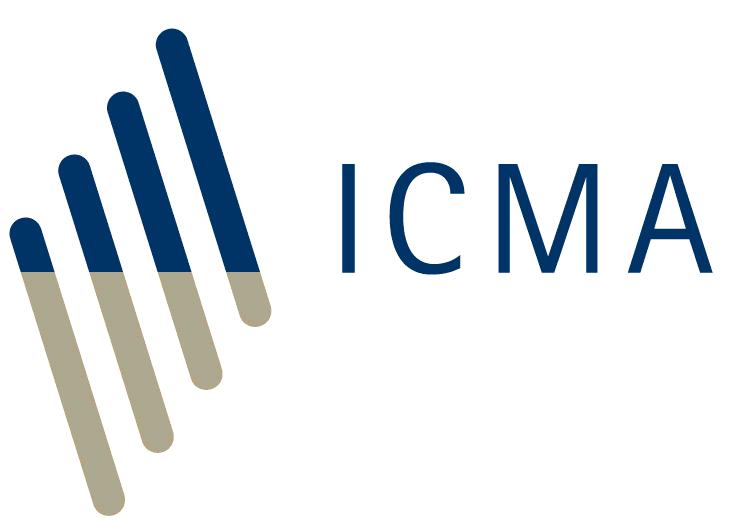CCP is the acronym for central (clearing) counterparty. In exchange-traded markets, they are known as clearing houses. CCPs perform two so-called clearing functionss:
- Once a transaction has been agreed between two parties and registered with a CCP, the CCP inserts itself into the transaction (so that one contract becomes two --- a legal process called novation) or is deemed to be an original party to the transaction (one transaction negotiated between two CCP members does not produce a contract between them but instead automatically generates two contracts, between the CCP and each of the members --- a process called open order). The CCP famously becomes the buyer to every seller and the seller to every buyer. On this basis, if one of the CCP members defaults, the CCP guarantees scheduled settlement for other members.
- The CCP will net transactions between members on a centralized basis (netting by a CCP is referred to as ’clearing‘). This means that a delivery of a security sold via the CCP by party A to party B can be netted off against deliveries of the same security on the same date bought via the CCP by party A from party C, thereby reducing A’s exposure. The same applies to cash payments in the same currency. This produces much smaller net exposures than decentralised bilateral netting, in which netting is only between separate pairs of parties. This type of netting is often called multilateral netting.
- The reduction of risk by having the CCP as a counterparty. CCPs are backed by a series of capital buffers (in the form of initial margins posted by members, committed and contingent contributions by members to a default fund, reserves and equity --- often called a waterfall of default resources). In a default by a member, the CCP will replace or hedge the positions of the defaulting member and seek to cover any replacement or hedging costs by drawing on the initial margin and, if necessary, default fund contribution of the defaulting member (a defaulter-pays process). If these resources are insufficient, the CCP will draw on a share of its own capital (this is called its skin-in-the-game and is intended to align the interests of the CCP and its members in ensuring risks are prudently managed)> Next, the CCP can call on the default fund contributions of the non-defaulting members and, if necessary, call for further default fund contributions (a survivor-pays process). In extremis, it can draw on the rest of its capital. Non-defaulting members will also be expected or formally committed to help the CCP put in place replacement transactions or hedges. The commitments taken on by the members of a CCP means that risk is shared or mutualized among the membership. CCPs are also subject to a special regulatory regime. Consequently, CCPs are deemed to be low-risk counterparties, for which reason, they have a much lower regulatory counterparty risk weight.
- The reduction of risk by the centralized netting of risk exposures
- The reduction of risk by variation margining (several times a day) to eliminate current or mark-to-market exposure.
- Risk management practices that are likely to be more rigorous than those of most market users.
- The reduction of balance sheets through netting.
- Operational efficiencies from the netting of payments and deliveries.
- As a higher proportion of trading is cleared across CCPs, more and more credit, liquidity and operational risks will be concentrated in these institutions, which will themselves become potential sources of systemic risk.
- Banks will have to apply credit limits to CCPs, taking account of the fact that, if they are members, they will also have contributed resources upfront and accepted contingent obligations to help support the CCP as a crisis becomes more severe. These limits may constrain market liquidity.
- Greater use of CCPs means greater collective reliance on a limited range of risk management methodologies, which may synchronise reactions to news (through changes in haircuts or collateral eligibility) and generate pro-cyclical shocks to the financial system. Strict haircutting by CCPs arguably had such an effect on Greece, Ireland, Italy, Portugal and Spain in 2011.
- Initial margins applied by CCPs can change, even if the size of the underlying position does not. This exposes members to unexpected calls on their resources and may be a source of pro-cyclicality in the market (see question 32).
- Although CCPs apply more rigorous risk management practices than many market users, their methodologies are often proprietary and therefore opaque, and it is not possible for members to scrutinize these methodologies, despite their critical dependence on them.
- Most financial assets are not eligible for clearing across CCPs. This includes most credit instruments. CCPs focus on liquid instruments in order to be able to value the risk, to be confident of being able to replace or hedge the positions of a defaulting member and to access sufficient turnover to be commercially viable.
- CCPs tend to specialise in particular products or asset classes. Use of CCPs therefore reduces the scope for netting across products, which institutions are currently able to do when they net on a bilateral basis
- Because CCPs accept a limited range of collateral assets, usually only cash in major currencies and top-quality government bonds, they may contribute to a systemic shortage of prime collateral for bilateral transactions.
- The initial margins or haircuts imposed by CCPs are very high compared to current market practice, and the remuneration of cash margin paid to members is low. Consequently, CCPs are expensive to use. The extra cost of using CCPs will raise the cost of funding to all market-users.
- CCPs may not be suitable for all types of market user. The access criteria and cost represent barriers to entry for smaller firms. Netting is only cost-effective for institutions with two-way flows of business, in other words, for market intermediaries rather than end-investors. Many end-users are unused to variation margining and may be deterred from trading by the cost and effort.
- Netting requires standardization of financial instruments. Less customization means that residual risks have to be managed in the uncleared market or left with the end-user. Given that uncleared business will be subject to higher regulatory capital requirements (in order to encourage migration, where possible, to CCPs), the latter outcome may be common. To this extent, financial markets will be constrained from their essential task of managing financial risks and allowing non-bank financial and non-financial institutions to focus on their core business.
The principal CCPs clearing repos in Europe are LCH Ltd in the UK, LCH SA in France, Eurex Clearing in Germany, CC&G in Italy and BME Clearing (formerly MEFF) in Spain.
CCPs clear a very significant proportion of the European repo market. The ICMA’s semi-annual survey of the European repo market suggests that about 30% of outstanding repos by value are cleared across a CCP. The proportion of repo turnover cleared across a CCP is likely to be even higher because the repos cleared in CCP tend to be short-term transactions and are therefore relatively understated in measures of outstanding volume (the ECB’s money market survey suggests in the order of about two-thirds for euro-denominated repos).
Most CCP-cleared repos are negotiated on automatic repo trading systems (ATS) such as NEX Markets (formerly BrokerTec), Eurex Repo and MTS. However, repo negotiated directly between parties or via a voice-broker can also be registered with a CCP post trade.
Back to Frequently Asked Questions on Repo contents page
<<< Previous page Next page >>>







